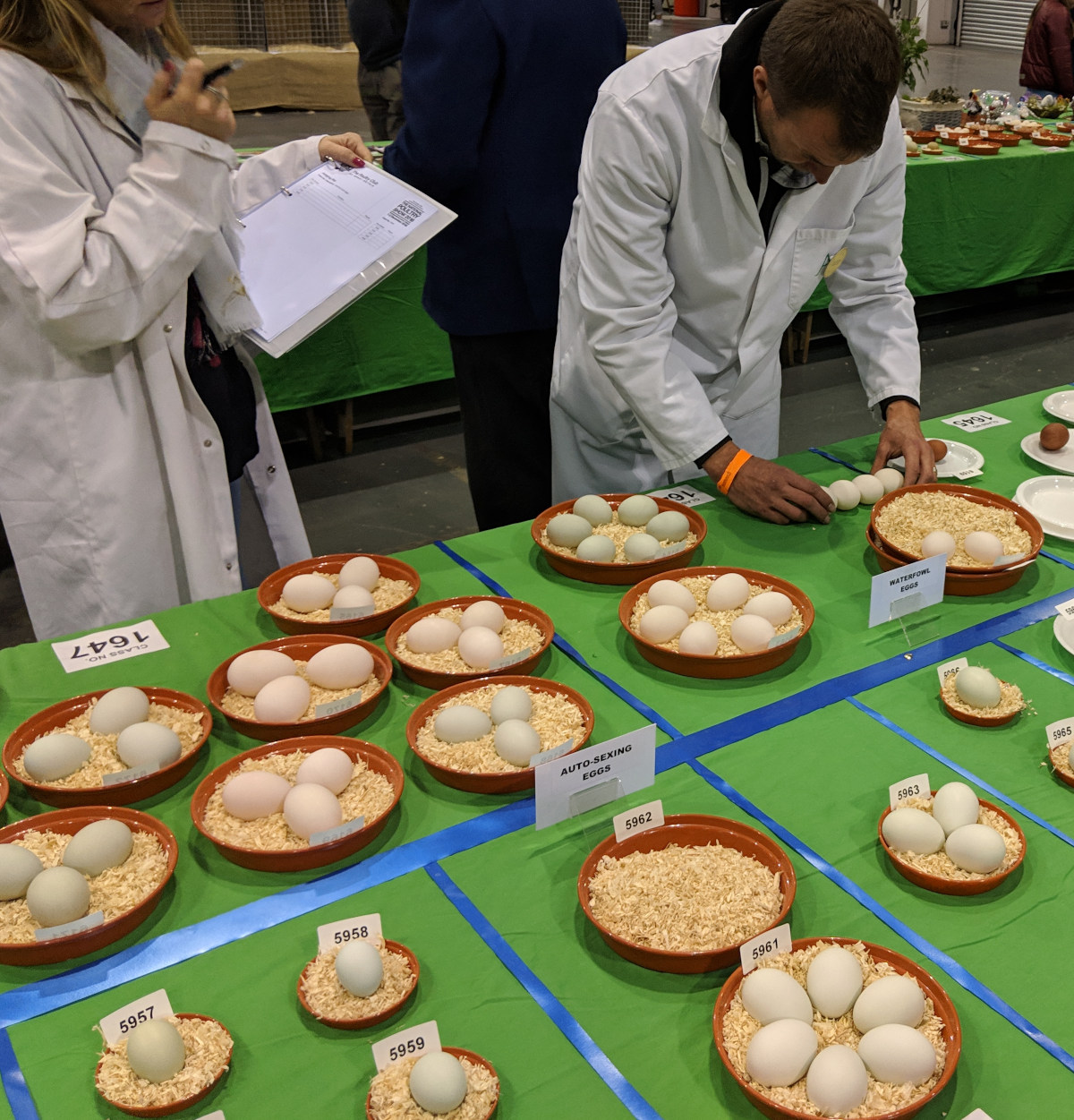
Showing eggs. How to produce, select and display exhibition quality eggs.
A large subset of categories at poultry shows is reserved for eggs and just about any egg can be shown if it meets the criteria.
Table of Contents
How do you show eggs?
Choose eggs that are clean, uniform in size, and free from cracks, deformities, or blemishes. Fresh eggs are preferred and I always avoid eggs that need to be cleaned.
Eggs are shown either singly , in threes, sixes or dozens and by contents, breed, colour or artistic display. There are egg classes for everyone. Make sure they are secure and won't roll around during transport or display.
Below: Class 135 is a selection of three eggs of different colours.
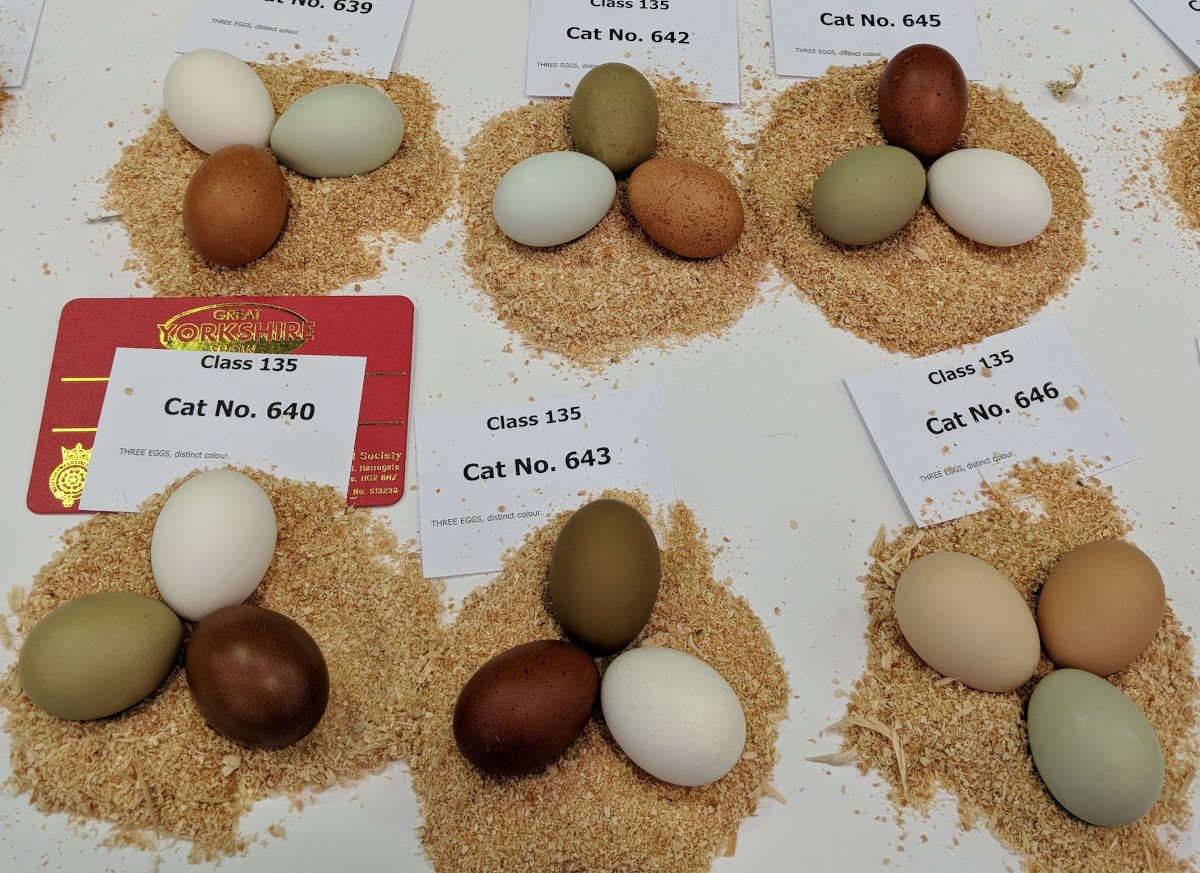
You show eggs from a particular breed or by size as well as by poultry type.
If you are presenting multiple eggs, strive for consistency in size, shape, and colour. This demonstrates that you have a good breeding program.
What are the egg show categories or classes?
Categories vary depending on the show and the country you are in but the standard egg show classes include:
- Breed classes like Welsummer
- One egg large fowl
- One egg bantam
- Plate of eggs
- Plate of white
- Three eggs of different colours
- Egg contents
- Best bantam
- Best large fowl
- Best decorated egg
- Best waterfowl
Below: There is often even a category for decorated eggs.
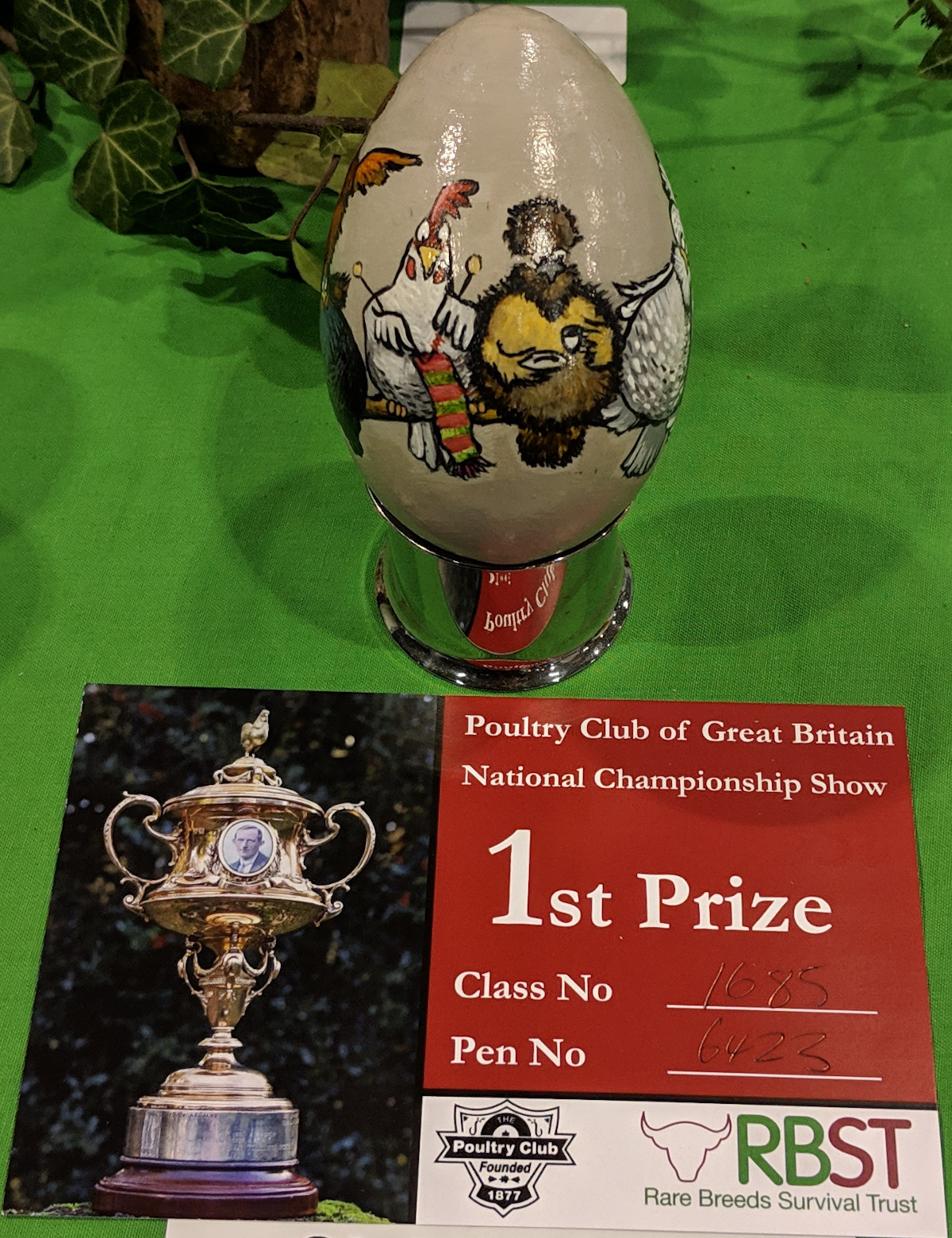
There is also normally a class for turkeys, guinea fowl, ducks and geese and often fun classes for kids like best speckled egg.
What are the egg judging criteria:
Eggs are judged on the aspects of the individual egg, the uniformity of the display or the quality of it's contents. Eggs will need to be symmetrical and broad with a large well rounded dome and not too pointed.
The scale of points when judging eggs:
- Shape - 25 points
- Size - 15 points
- Shell texture - 20 points
- Colour - 20 points
- Freshness, appearance and bloom - 20 points.
Egg judges will look for:
- Eggs with firm shells free from defects and cracks.
- Shape is the first thing judges look for.
- Fresh eggs with small air cells.
- Uniformity of size and weight.
- Conformity with the breed standards.
Shells should be smooth to the touch and free from any imperfections. A good bloom is a necessity.
Always adhere to the rules and guidelines of the specific egg show or competition you are participating in. Different shows may have varying criteria and requirements for presenting eggs.
What makes a good show egg?
Eggs for show will be from rare or heritage breeds of chickens. Modern hybrids do not produce eggs that are good enough for show. The shells on hybrid eggs are too thin and the eggs white too watery for them to make good show eggs.
Eggs that do well in shows will be about 1.4 times as long as they are wide and the air cell must be less than 1/8" in size and not move around. Eggs should be a good size and weight for their breed.
Below: Best Russian Orloff eggs. They are uniform in size, shape and colouring.
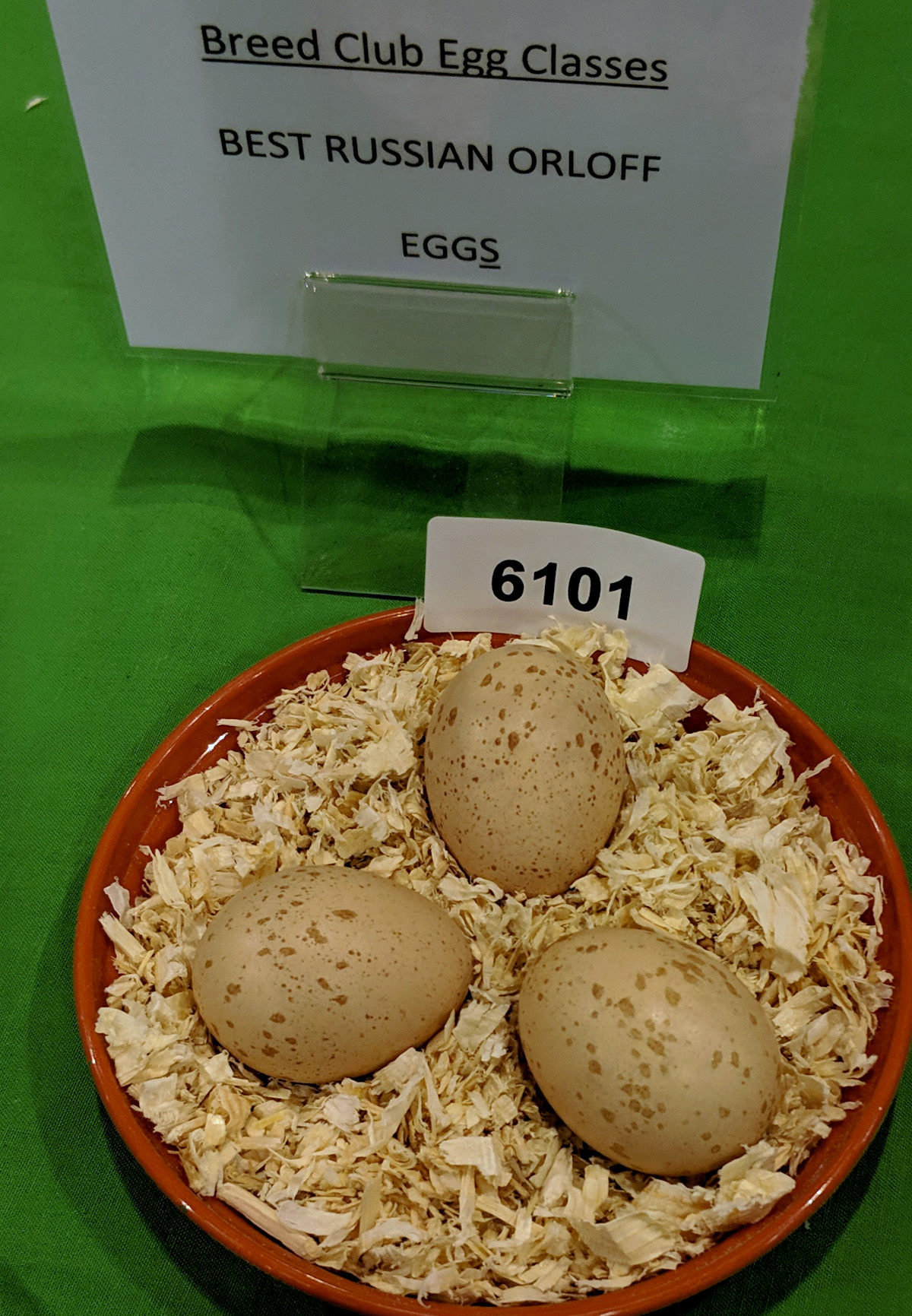
Eggs should not have meat spots or floating foreign bodies.
Never exhibit eggs in show that are:
- Not uniform in size and shape
- Dirty or smudged
- Too small or large
- Odd shapes
- Have cracked, porous or rough shells.
How do you display eggs for a show?
Eggs for show are either displayed singly, in threes or sixes or by the dozen.
When transporting or setting up the eggs, handle them gently to prevent damage. Cracked or broken eggs are disqualified from competitions.
The show organisers usually provide a small plastic dish with some wood shavings or fine sand for you to arrange the eggs in.
Arrange the eggs neatly in their carton or tray, ensuring they are evenly spaced and well organised. This makes a good impression on judges and viewers.
Below: These best in breed Marans eggs are displayed on fine wood shavings.
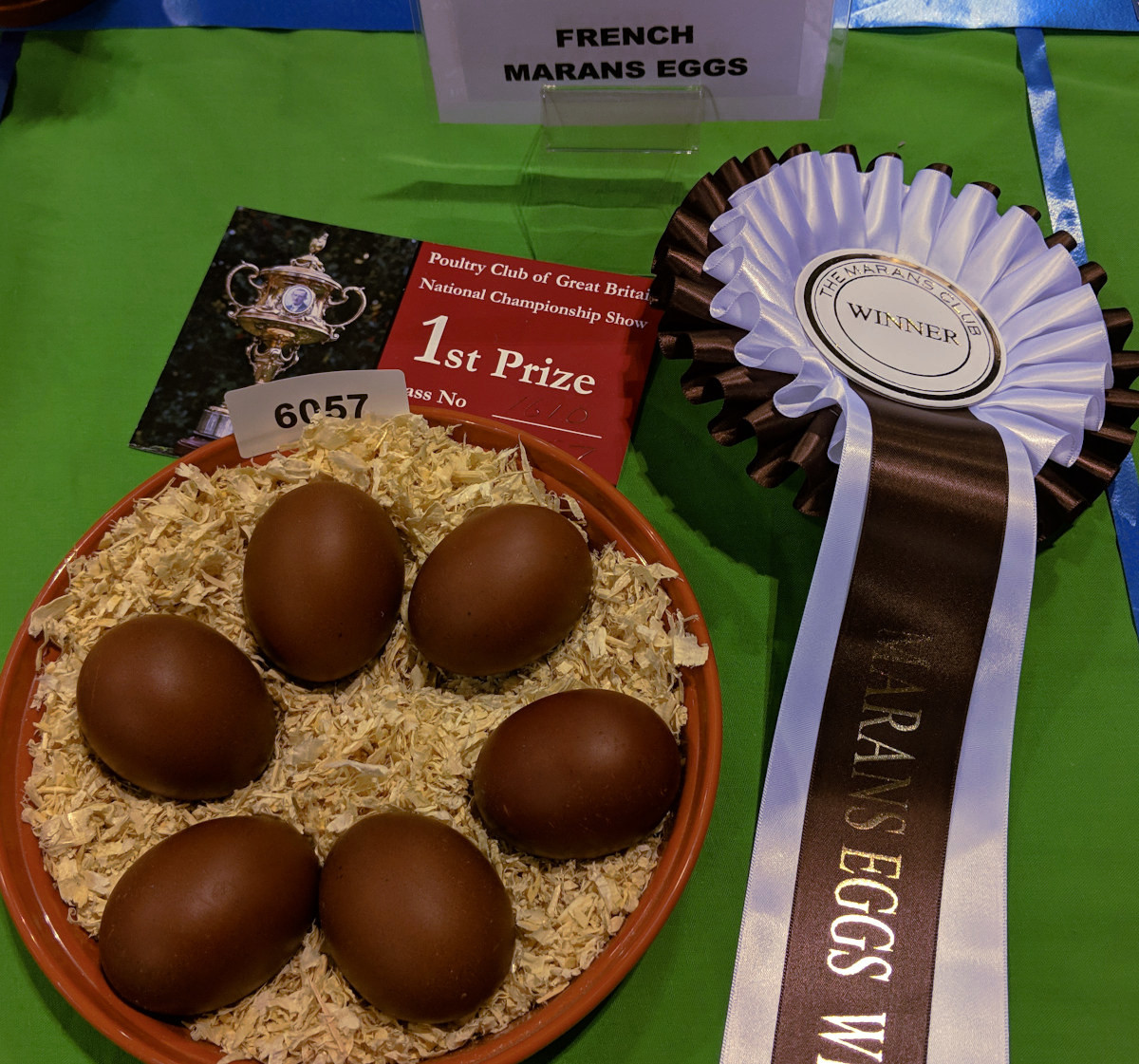
Should you candle eggs for show?
You should candle your eggs that have been chosen for show. It is more important if you are in the egg contents category as large air cells or meat spots will get you marked down.
Stale, old or poor quality eggs will have a large air cell and the yolk will be more visible and mobile. A meat or blood spot will show up as a dark spot in the albumen.
Should you clean eggs for show?
I would not wash eggs that are destined for show.
A judge will know if an egg has been washed or polished. I prefer to keep a clean nest and collect eggs three times a day rather than risk washing them.
The cleaning of coloured eggs is a bad idea. Brown pigment can be washed of or smudged during cleaning and even the lightest touch can cause discolouration. The exception to this is green eggs as the colour is part of the shell.
Best egg contents:
These eggs are broken on judging and the contents assessed. These egg will need a good firm shell, a good portion of firm eggs white and a large, round clearly defined yolk.
The scale of points for judging egg contents:
- Yolk - 30 points
- Albumen - 30 points
- Chalazae - 10 points
- Airspace - 10 points
- Freshness - 20 points
The key to producing quality eggs is nutritious diet and stress free hens. Yolk colour id effected by the foods a chicken eats and the egg albumin can be thickened slightly by feeding a little more grain in the diet.
Below: Winner of the content category in the egg show at the national.

When a stale egg or an egg of poor quality is broken out, the egg white (albumen) will spread or flatten out. The yolk will be flat and very easily broken.
Eggs of good quality will have a firm, thick albumen that is compact and upstanding. The yolk will stand up and be round in appearance.
